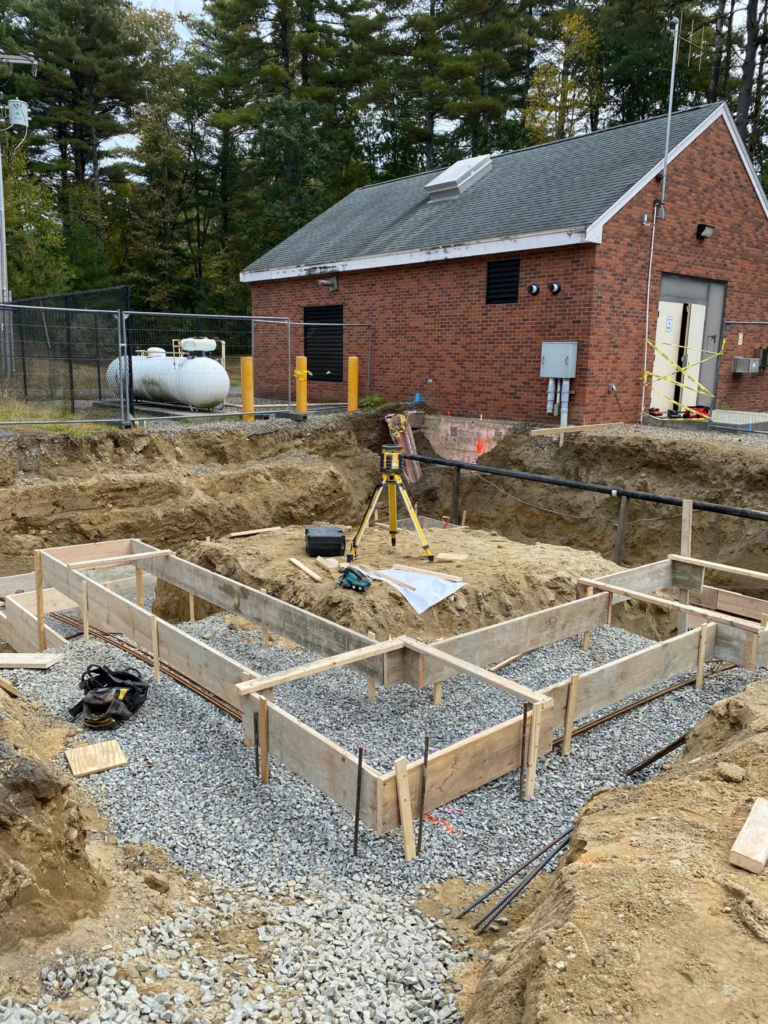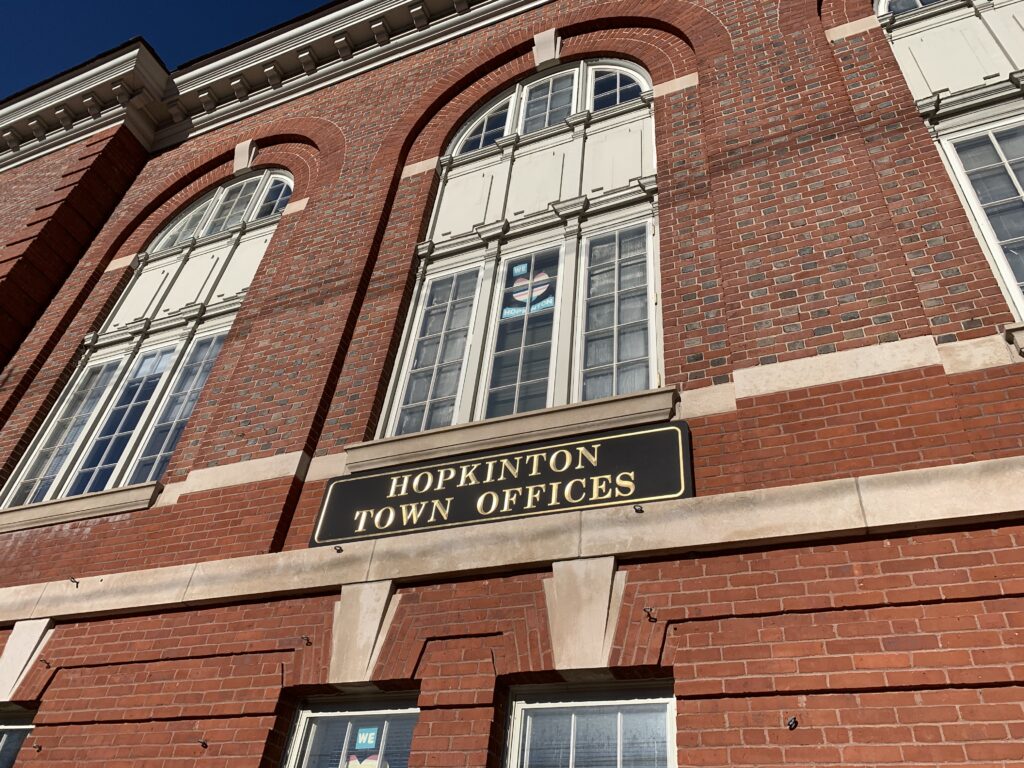Town Manager Norman Khumalo hosted a 90-minute public forum on Tuesday night to receive public input on potentially spending $1,187,000 of American Rescue Plan Act grant funds on a $1.7 million water filtration system to remove per- and polyfluoroalkyl substances, better known as PFAS, from the municipal water supply.
Khumalo, who will administer the grant funding, proposed using the money to add two filtration vessels at Well 6 on Fruit Street to bring PFAS levels below current detection levels and into current state and federal draft compliance levels. It would supplement $600,000 previously appropriated by Town Meeting last year to address the rising concern over elevated PFAS levels over the past 19 months. He noted that the cost of the filtration system now is “substantially higher” than expected because of inflation and the need for a larger filtration system.
PFAS are a group of several thousand synthetic chemical compounds that have been produced in the United States since the 1950s. According to the Centers for Disease Control and Prevention, 97% of Americans have been exposed to PFAS. They are used to make products resistant to heat, water and stains and can be found in clothing, food packaging and cookware. Contaminated drinking water is the most common source of exposure, according to an Association of State and Territorial Health Officials report published in October 2019. Some potential risks from PFAS exposure include potential damage to the liver, kidneys and immune system, as well as complications during pregnancy.
“The object here is to get your input on the use of the ARPA funds to make this project happen,” Khumalo said to about a dozen attendees. He recognized the town’s drought issues and the water volume needed to sustain the community. Although he does not need town approval to spend the money, he stressed that the town’s process is to seek community input on decisions.
Leah Stanton, the vice president and water discipline leader of Weston & Sampson Engineers, explained that PFAS was first identified in a Hopkinton water sample in October 2021 in Well 6, one of the town’s newest and highest-producing wells. It is located near the old DPW building, off the access road to the Fruit Street athletic fields. Wells 1 and 2 on the opposite side of Fruit Street are not heavily pumped because they have higher levels of iron and manganese, she noted, and Well 3 is offline. The remaining four town wells rarely are used. Drinking water usually is combined from different wells.
At the town’s request, Weston & Sampson engineers provided an estimate of $600,000 for immediate PFAS treatment with a single filtration system. Upon further investigation, “a longer-term solution” and a “more robust treatment system” with larger filters were recommended. Because Well 6 produces so much of the town’s water, keeping the well operational is paramount.
“We are chasing time here,” Stanton stressed, noting she has worked with Hopkinton for a decade. “We are trying to do an interim solution for the town to get the PFAS out and meet the safe drinking water standards until the [Massachusetts Water Resources Authority] connection comes in.”
Stanton added that the new system, which will begin implementation this winter, is designed to last 15 to 20 years. It would remove magnesium and iron as well as PFAS and currently is estimated to cost about $20 million to construct.
While skyrocketing supply and construction costs have led to the increased price, Stanton said the changes in the filtration system size also boosted the projected project price. The dual filtration system will use granular activated carbon followed by ion exchange media. Water then will re-enter the well for chlorination and potassium hydroxide adjustment before going out to the public.
In March 2022, the Massachusetts Department of Environmental Protection implemented a maximum contaminant level of 20 parts per trillion for the sum of six PFAS compounds, according to Stanton, with each of six PFAS variants at a maximum level of four parts per trillion. Well 6 was the only well with water detected above that level of contamination. The proposed treatment system will treat the water to both state and federal standards. Removing manganese and iron from the water would require the construction of a different type of plant that would extract those minerals at a parts-per-million ratio, Stanton said, as well as PFAS at a parts-per-trillion ratio.
Design requirements implemented by MassDEP changed since the initial $600,000 estimate, Stanton said. She noted that the process of backwashing water into the ground no longer is allowed. In addition, she said the state is working to find a place to dispose of PFAS because only one landfill in the state is accepting it.
Khumalo introduced Thomas Temple as the interim Department of Public Works director. Temple worked as the Assistant DPW director in Marlborough and the DPW director for Chatham, where he dealt with PFAS contamination in the tourist community before his retirement.
Said Temple: “Everything that you’ve experienced, I’ve experienced in the Town of Chatham.”
He also noted that there is quarterly water sampling of the wells.
Residents asked about the use of home reverse osmosis filters to extract these chemicals.
“I can assure you that reverse osmosis is the most expensive,” said Stanton, noting that there is no way for the town to monitor it. Governments are reluctant to endorse this process, Khumalo added.
Residents questioned if connecting to the MWRA system was a foregone conclusion at this point.
“PFAS was the trump card for Hopkinton, in my opinion,” Stanton said, noting that the MWRA can deal with a wider variety of potential contaminants.
Khumalo explained that a study was funded to see if an MWRA connection would be appropriate for the town. A survey was conducted last year that recommended that point-of-entry monitoring would be the most efficient for the town, and the water would comply with Safe Drinking Water Act standards. Funds already have been appropriated for the design process to begin for an MWRA connection via Southborough. The design process may take two to three years.
Khumalo clarified that several years ago, Town Meeting approved funding for a connection via Ashland. At a more recent Town Meeting, there was a vote to reallocate that money for the design of an MWRA connection through Southborough.
Said Khumalo: “We have stated clearly we still need to go back to Town Meeting to discuss and — if approved by Town Meeting — appropriate funds for the actual construction to the MWRA.”
Select Board member Muriel Kramer stressed that the filtration system is “an interim solution,” with an MWRA connection as a permanent solution. She also asked if some of the ARPA funding could be set aside to help homeowners with private wells to address and mitigate their PFAS concerns.
Khumalo said that would be “a policy decision” that would need to be reviewed by the town.
The connection of 35% of the town to private wells was another point raised, as well as whether residents with private wells will test for it. Stanton noted that the same volume of water is not used at facilities such as businesses and golf courses as opposed to private homes.
Health Director Shaun McAuliffe said he met with MassDEP officials two weeks ago, and they are working on what the private well standard will be.
Khumalo noted that the town is still in the “early stages” of formulating the town’s annual water rates. This process should be completed “in the coming weeks.”
















To clarify, Ms. Stanton noted that wells 1 and 2 had high manganese and iron, and a system to fully remove these minerals would cost in the range of $20M, which is one of the factors leaning the argument towards an MWRA hook-up.
I spoke with her afterwards, and she indicated that with the Ashland water supply, water from well 6 (the high PFAS well) likely contributes about 50% of the water that is distributed to the public.